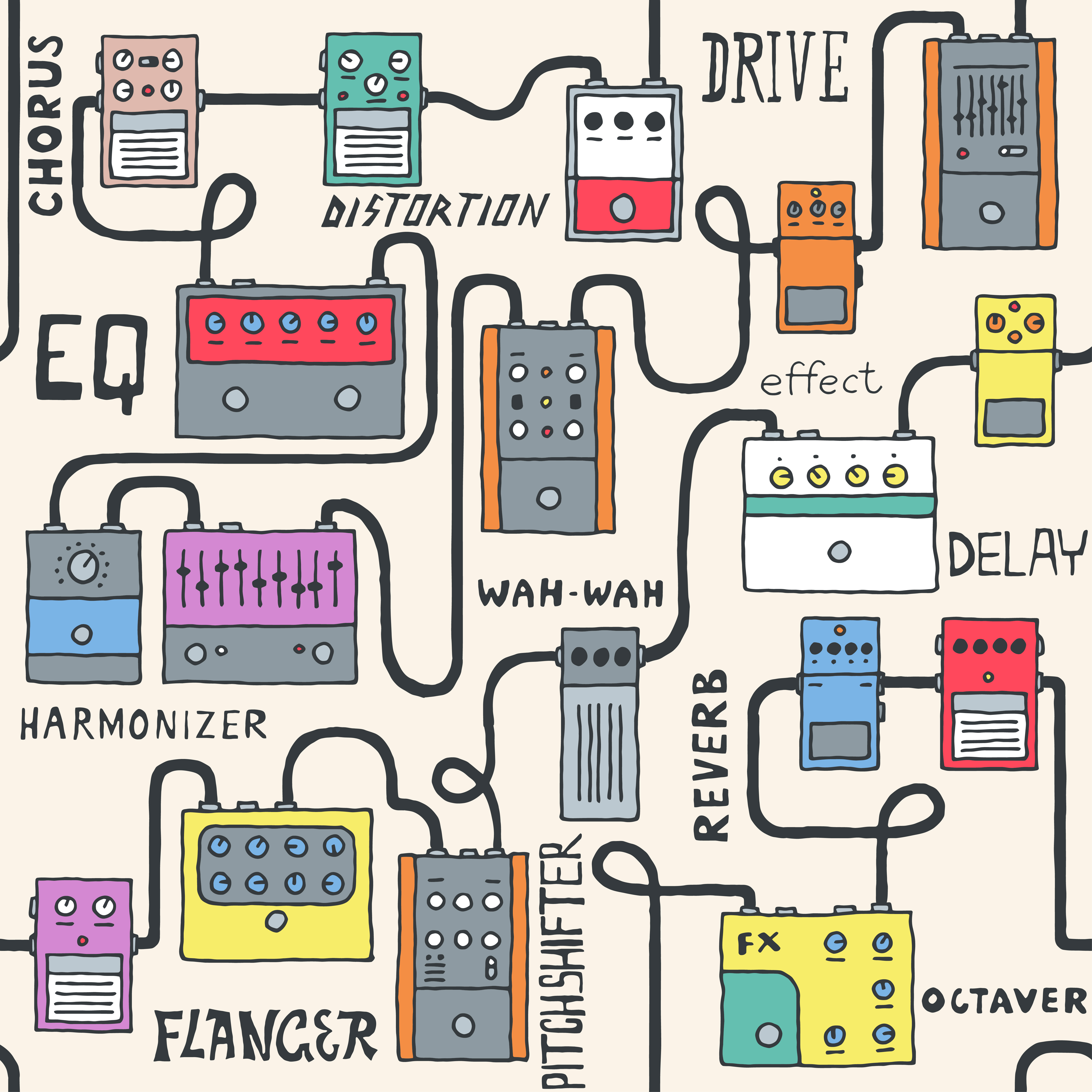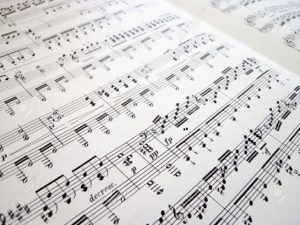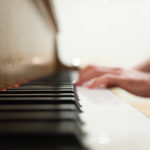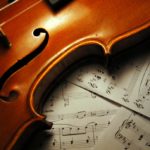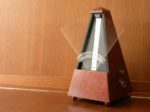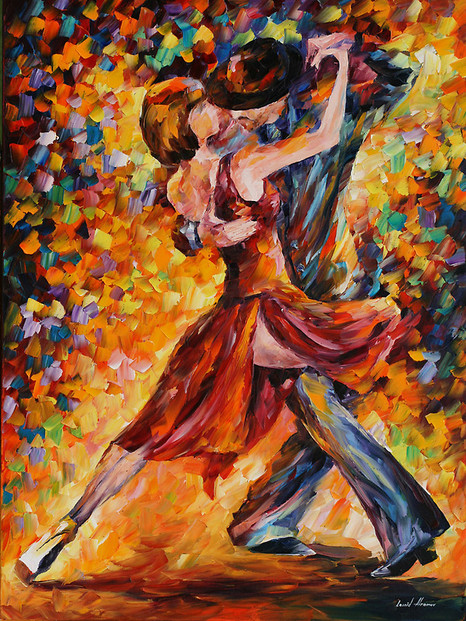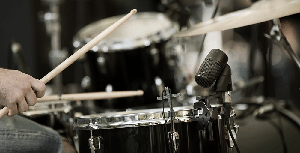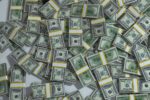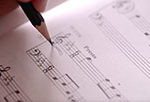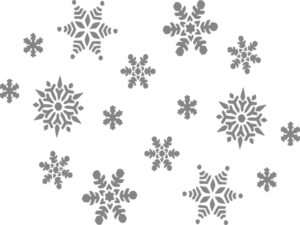Guitar effects pedals, also known as "stomp-boxes," are yet another useful tool in the guitar player’s toolbox for tone shaping. They are foot-pedal boxes that provide sound effects for the guitar.
The key to getting that guitar tone you strive for comes down to an effects unit of some sort, especially if you’re going for the kind of sound The Edge (David Howell Evans, the guitar player from U2) has. Many worship-music guitarists also use several effects pedals to achieve their lush soundscapes. It’s amazing how these pedals can make a single instrument sound so full.
Other notable displays of effects pedal include Jimi Hendrix’s iconic rendition of the “Star Spangled Banner,” which uses a combination of effects and clever control of amp feedback, as well as John Mayer’s swelling guitar tone in “I Don’t Trust Myself” which was achieved with an AdrenaLinn III effects pedal.
John Mayer’s “I Don’t Trust Myself”
The topic of effects pedals can often be a rabbit-hole to dive into, considering there are thousands of different stomp-boxes on the market, but they can essentially be broken up into seven main categories, with a few subcategories in there too:
1. Dynamics
2. Drive
3. Modulate
- Flanger
- Octaver
1. Dynamics
Dynamic effects can either change your overall volume or they can help you tame volume variations. I like to think of dynamics effects as either a compressor effect or a boost effect.
Compressor effects help you control the volume variations of your guitar. The compressor basically makes the loud parts softer and the quiet parts louder. This can help you fatten up the sound of your guitar as the overall sound will have much more sustain and often the low-end becomes more pronounced. Some compressor pedals are also sold as sustain pedals, which certainly does give a clearer idea of one of the ways the effect can be used.
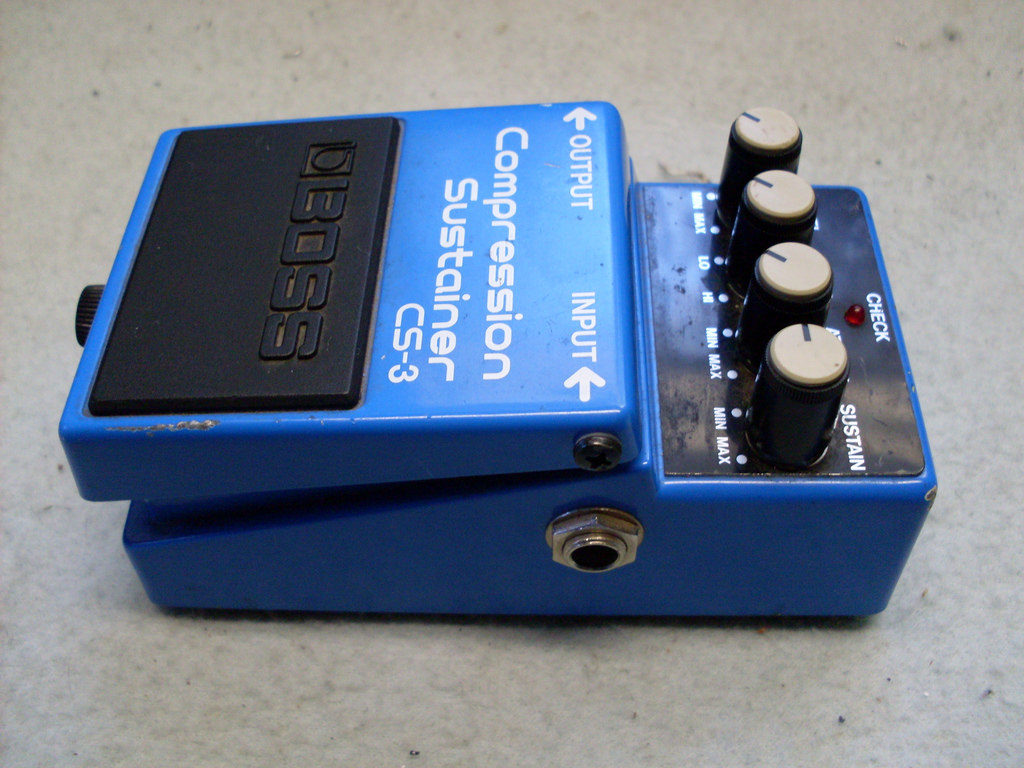
However, compressors can also make your staccato rhythms sound more pronounced. A lot of country and funk guitarists use compressors to help their muted ghost-notes pop out.
Compressor effects are generally used across all genres of music. In many guitarists’ pedalboard rigs, their compressor pedals are often “always-on” pedals. Whenever they play, their compressor will be turned on because it’s a key element to their tone and playing.
Be careful though, compressors can sometimes highlight your mistakes, so remember to practice with a compressor every so often!
Boost effects are simple effects that increase overall volume. However, every boost pedal is very unique and often sounds different. It always comes down to the type of components the effects pedal manufacturer used to achieve the volume boost. Some boost pedals try to maintain the guitar tone while providing a volume boost, others can heavily affect the guitar tone while providing a volume boost. Oftentimes, guitarists will get a specific boost pedal and use it as an always-on effect because they like the way the boost pedal colors their tone.
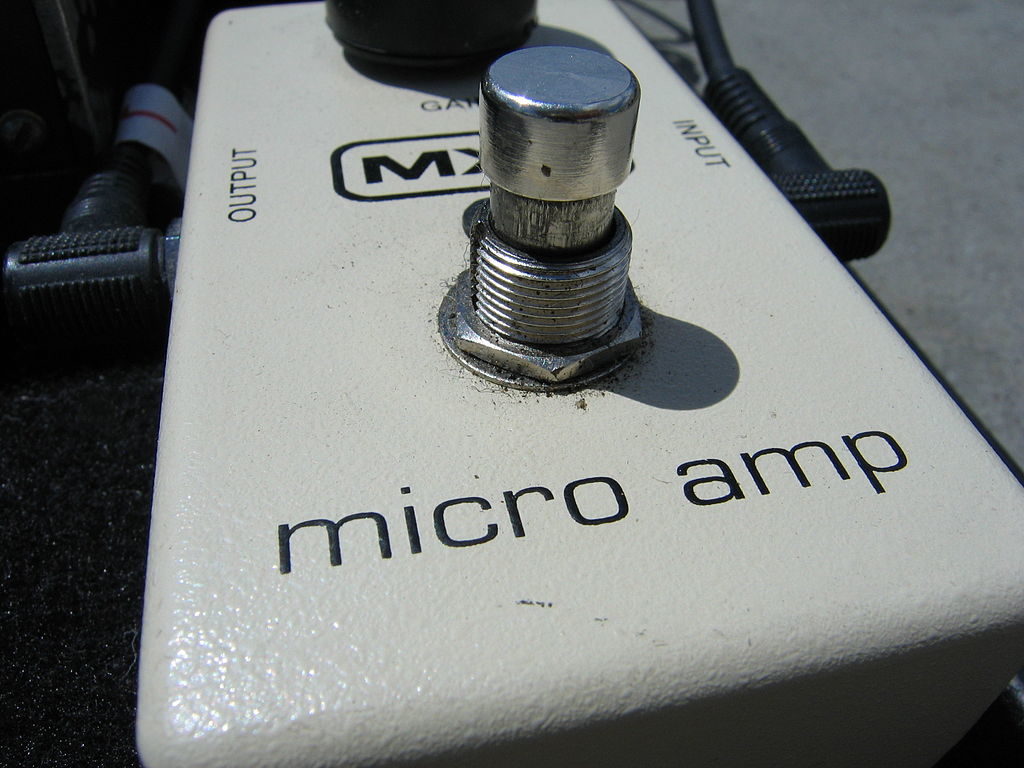
Boost pedals are typically used during guitar solos; those moments when you want to cut through the band and really sing with the guitar.
Some boost pedals have an additional overdrive effect on your guitar tone, which brings us to our next category.
2. Drive
Drive pedals are usually pedals that provide a boost in your gain in order to create a crunchy, rock tone. Depending on how far the gain is pushed, drive pedals can be divided into three subcategories: Overdrive, Distortion, and Fuzz.
The original Overdrive pedals were created to mimic the sound of tube amps being cranked to 10. This will cause the tubes to be pushed to their limits, producing a crunchy and aggressive tone. The sound of overdriven tubes are certainly iconic as it gave birth to the sound of Rock ‘n’ Roll. However, the problem with bringing your volume up to 10 to overdrive your tubes is that it gets really, really loud--safety hazard loud.
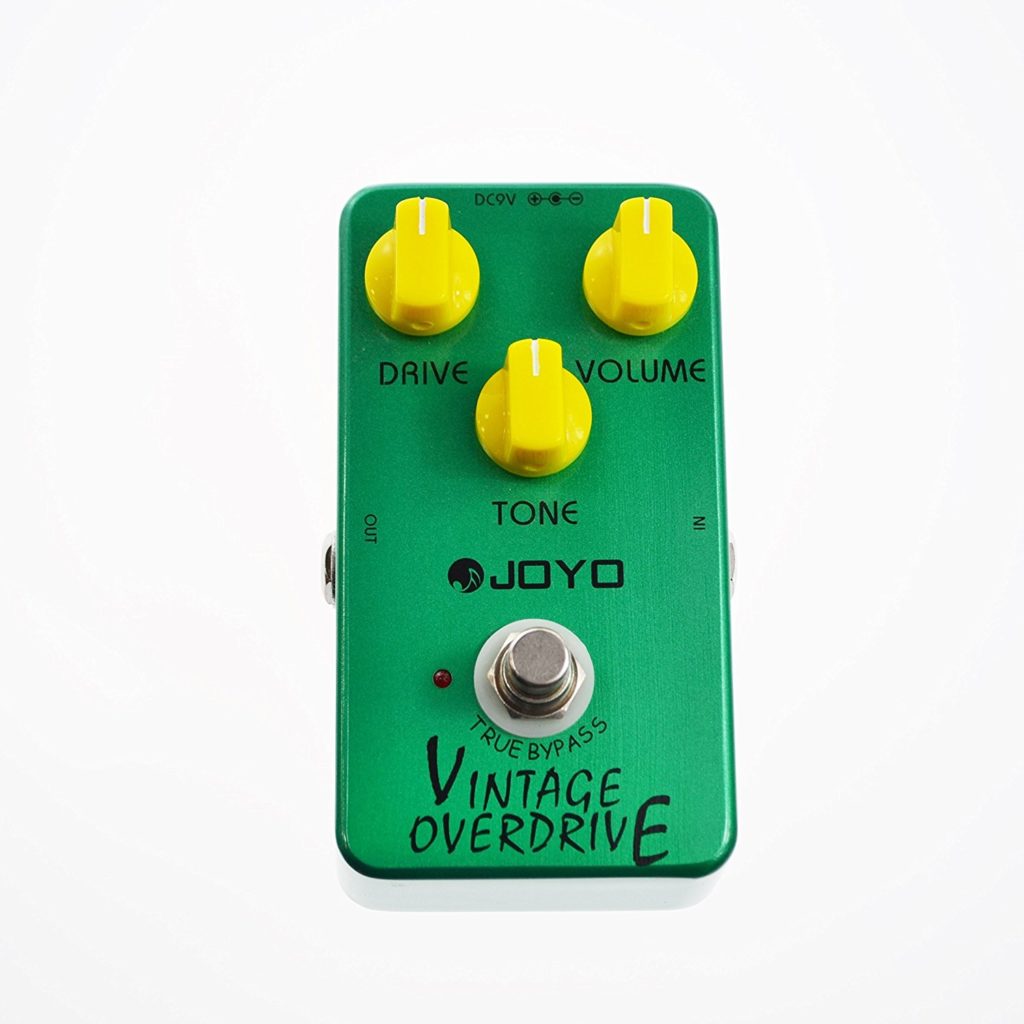
Check out Stevie Ray Vaughan’s overdrive tone. He famously used an Ibanez TS-808 and TS9 Tube Screamer pedal to get that iconic Texas Blues tone.
Distortion effects are really like an overdrive pedal taken to another level. Many distortion pedals are simply overdrive pedals with the ability to dial in a higher gain setting (“Gain” can be thought of as the volume going into the overdrive components of the pedal). Some pedals will also have a built in equalizer to shape the tone of the distortion.
Listen to some hard rock, and maybe even metal, to get an idea of what a distortion effect sounds like. However, the effect is also often used in Pop, Rock, and Blues.
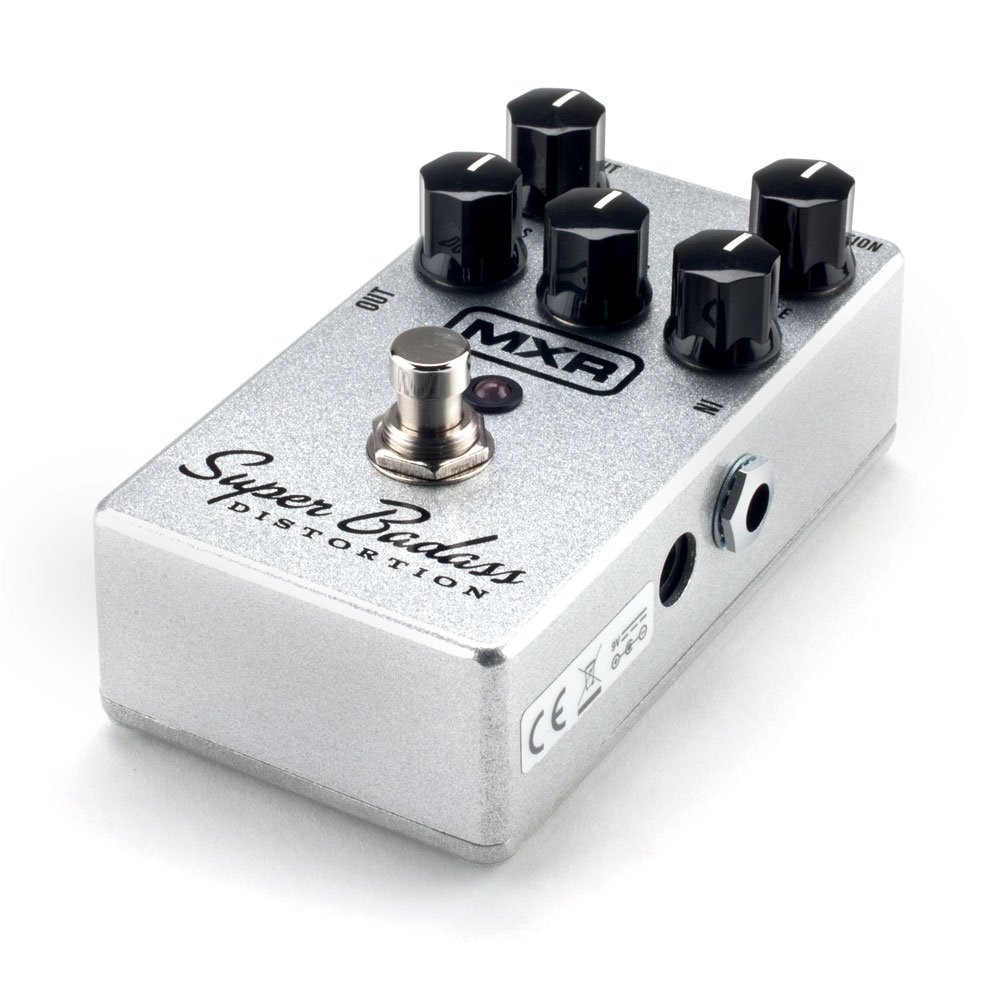
In this video, Steve Vai demos a distortion pedal that he designed in collaboration with Ibanez. Take note of how much more crunch you can hear in a distortion pedal compared to an overdrive.
Fuzz pedals take distortion, and further distort the tone resulting in a sound that can really only be described as fuzz. This effect was originally achieved by accident, often due to broken speakers or electrical components in a guitar amp. Many contemporary blues-rock guitarists continue to use this effect due to its in-your-face tone. A fuzz effect can also be heard in Jimi Hendrix’s rendition of the “Star Spangled Banner.”
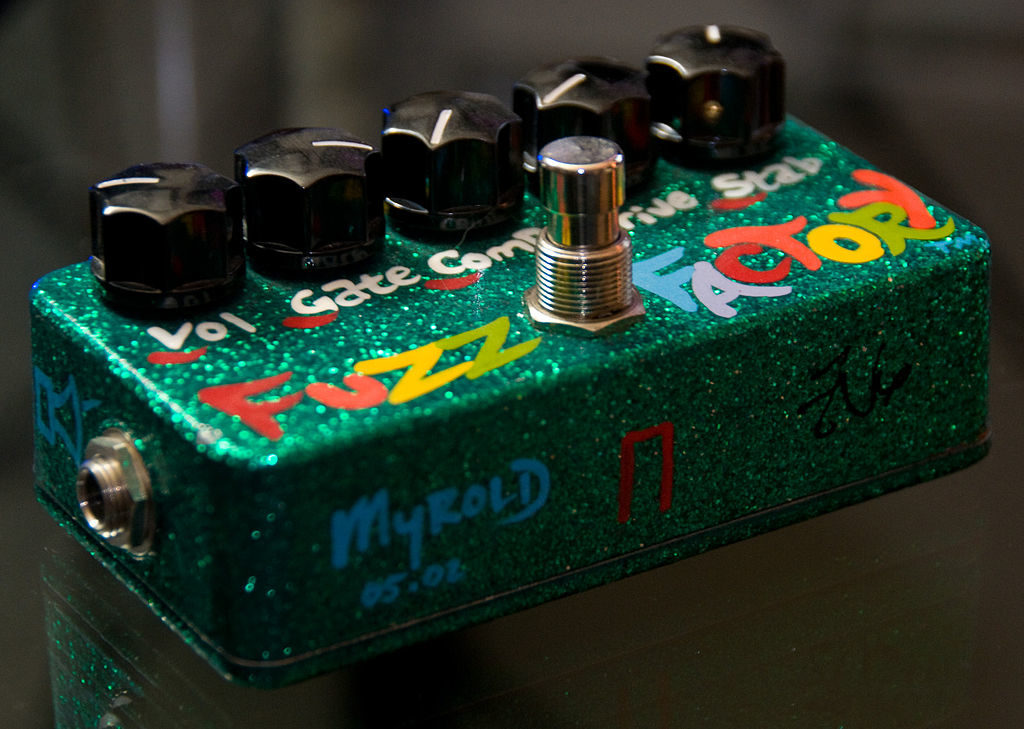
Here is Jimi Hendrix using his famous Octavia Fuzz pedal in this live version of Purple Haze. Doesn’t it sound like a broken amp on some level?!
Some fuzz pedals can interestingly work as an overdrive, distortion, and fuzz effects, all at the same time. It again all comes down to the amount of gain going into the pedal. Besides adjusting the gain setting on the pedal, you can also adjust the gain by using your guitar’s volume knob.
3. Modulate
Modulation effects can be used to change the pitch or frequency parameters of a sound to create some very new, unique sounds. Those spaceship sounds that Jimi Hendrix did at Woodstock can be attributed to a modulation effect, and the same can be said for Jack White’s low growling bass sound in “Seven Nation Army.”
The most common modulation effects are: Phaser, Flanger, Chorus, and Octaver.
Phaser effects work by duplicating and altering a sound wave, then playing the altered sound concurrently with the original one. The altered sound wave is modulated with a filter that places peaks and troughs in the waveform resulting in a swirly, sweeping, and rotating sound.
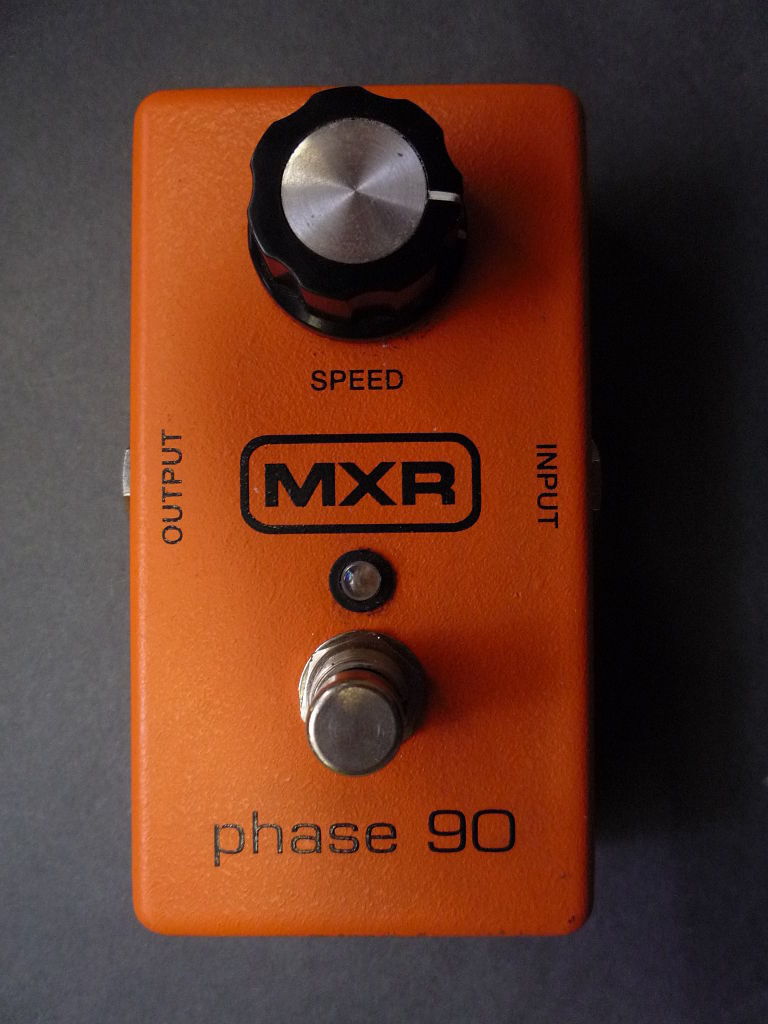
Jimi Hendrix generously using a phaser in “Machine Gun”
Flangers are often mistaken for phasers as the two effects can sometimes sound similar, but there are significant differences between how the two effects are produced.
The flanging effect is created by mixing two identical signals together while delaying the second signal by a small and gradually changing period of time. This delay is often no longer than 20 milliseconds. A simple way of thinking about the differences between phasers and flangers is that phasers work by affecting the frequencies with a filter, while a flanger affects frequencies with a time-delay.
If all this seems too technical and you’re only interested in how they sound, then I admit, the do sound very similar, but a key difference is that flangers can be a lot more obvious to the ear than phasers.
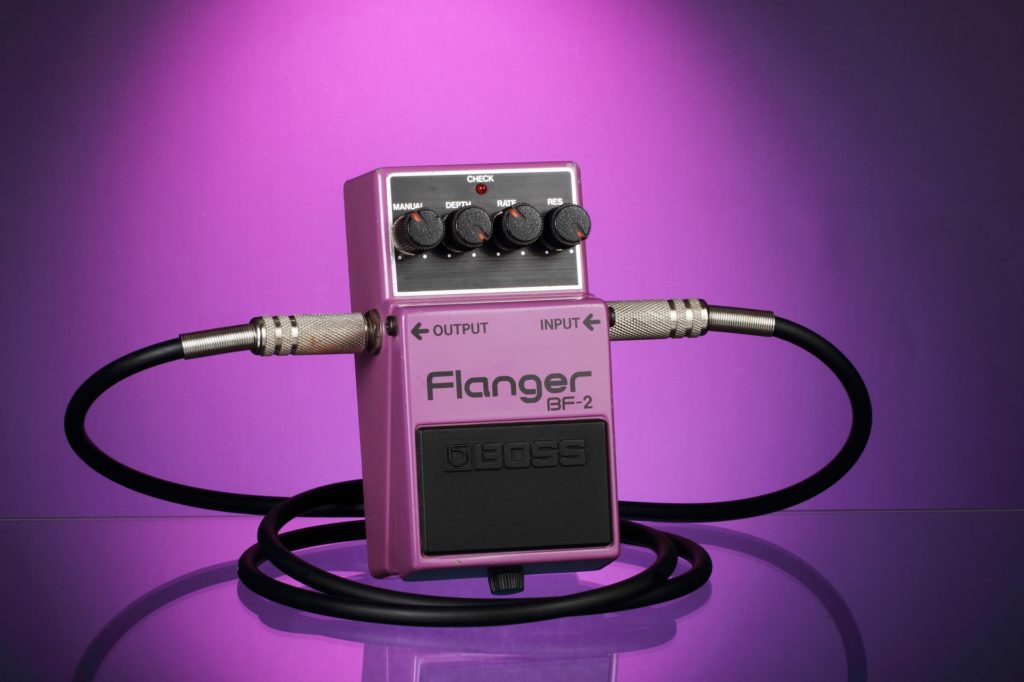
Both phasers and flangers can be heard in the rock genres of the 60s and 70s.
A flanger can be heard being used on the guitar in “Barracuda” by Heart
A Chorus effect can help you achieve lush, warm, and rich tones that work well during busier parts of a song. The effect attempts to simulate the sound of multiple performers playing the same part of a song at once. It works similarly to a flanger effect, where a sound is duplicated and slightly delayed. Choruses often use a longer delay than a flanger, and the delay time is also modulated with an oscillator to simulate the natural variations in time and pitch that will occur between several different performers.
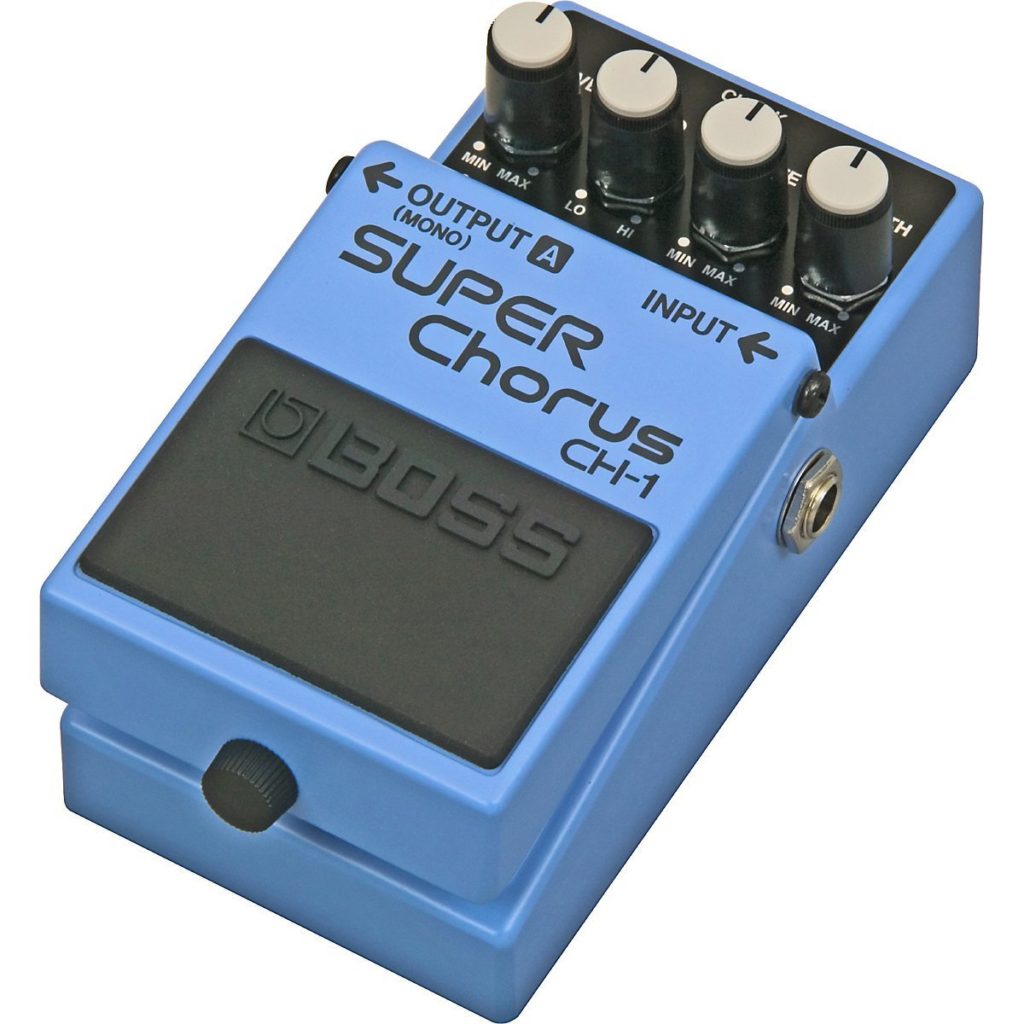
If you ever forget what a chorus pedal sounds like, think of what its name implies. The definition of a chorus is a group of people singing in unison, and that’s the sound the effect is going for. Chorus pedals can be heard being used generously in many hits from the 80s.
A chorus effect can be heard on the guitars in the chorus of “Message In A Bottle” by The Police
An Octaver is a cool little effect that will tune your original sound several octaves up or down in pitch. This effect can give you the ability to fill up the bass frequencies with your guitar. You can often see Jack White using this effect when he plays live with only one other drummer. He will turn on his octaver at certain points of the song to play bass lines.
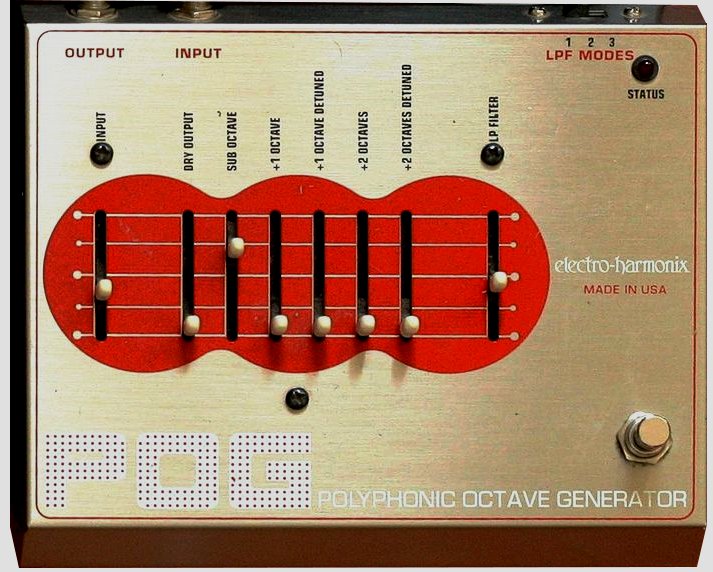
Although some modulation effects rely on using time-delay to achieve their sounds, there is another category of effects that also use time-delays for different purposes.
4. Delay
Delay effects use much longer delays than modulation pedals. They also provide repeating delayed notes, so it isn’t just a single delayed sound after the original one, but several instances of the same sound being played back at a predetermined delay.
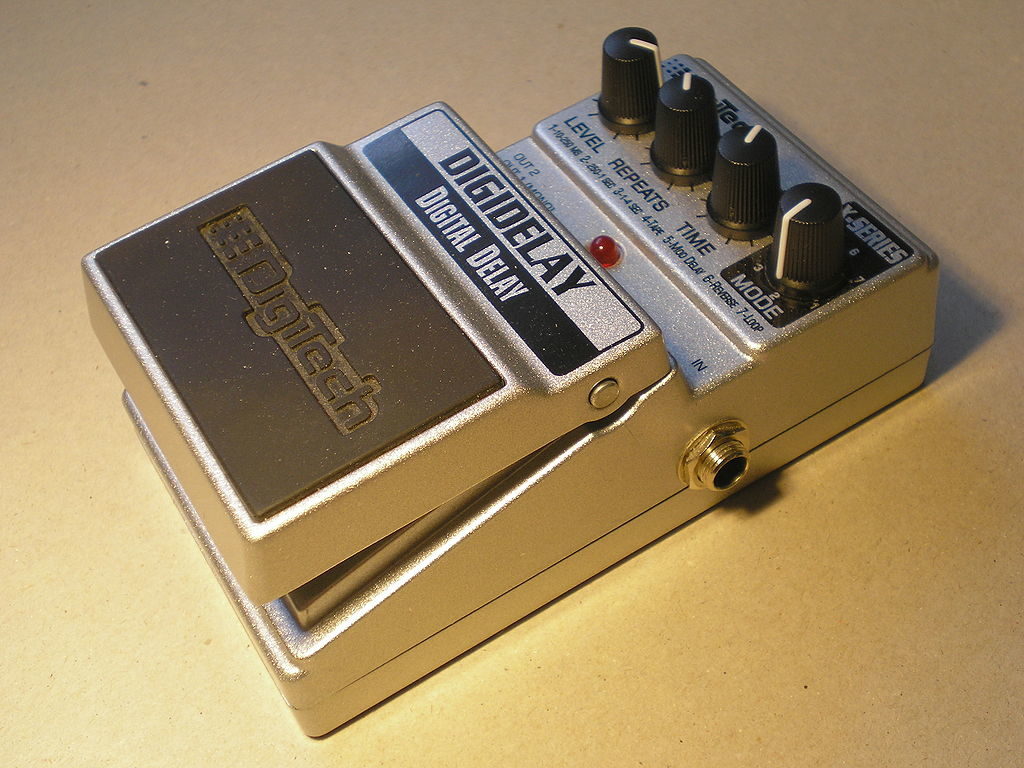
They can be used to mimic the sound of an echo, or you can use the delays to create very full sounding and complex guitar parts. You can even play a melody on your guitar, then play a harmonizing line to that melody when the delayed signal is being played back.
Depending on the components used in the delay pedal, delays can either sound exactly like the original source sound, or the delays can sound like they have a modulation effect on them. In fact, some of the most popular delay pedals apply a phaser modulation effect on the repeated delay sounds. Stacking different effects on top of one another in a single pedal is not uncommon at all, and delay pedals typically have some other effect added-on.
The delay effect is another effect that is very widely used across all genres of music. In fact, I feel like time delay effects are almost essential to give your sounds a sense of depth and space.
Here is The Edge from U2 demonstrating his guitar rig and his delay sound. Other than creating a unique sense of space, delays are great for creating complex rhythm patterns, as demonstrated by here.
In the above video example, beside using a delay effect, The Edge also uses another effect known as reverb to create a wider sense of space.
5. Reverb
Reverb effects essentially simulate the sounds of different spaces.
For example, think about how different you sound when you sing to yourself in your bathroom compared to when you sing in your car. Although your voice likely sounds the same in isolation, those two spaces caused your voice to sound very different.
Next, try speaking while facing a concrete wall, then try the same thing while facing a curtain. Notice how the reflection of sound on these two materials sound drastically different?
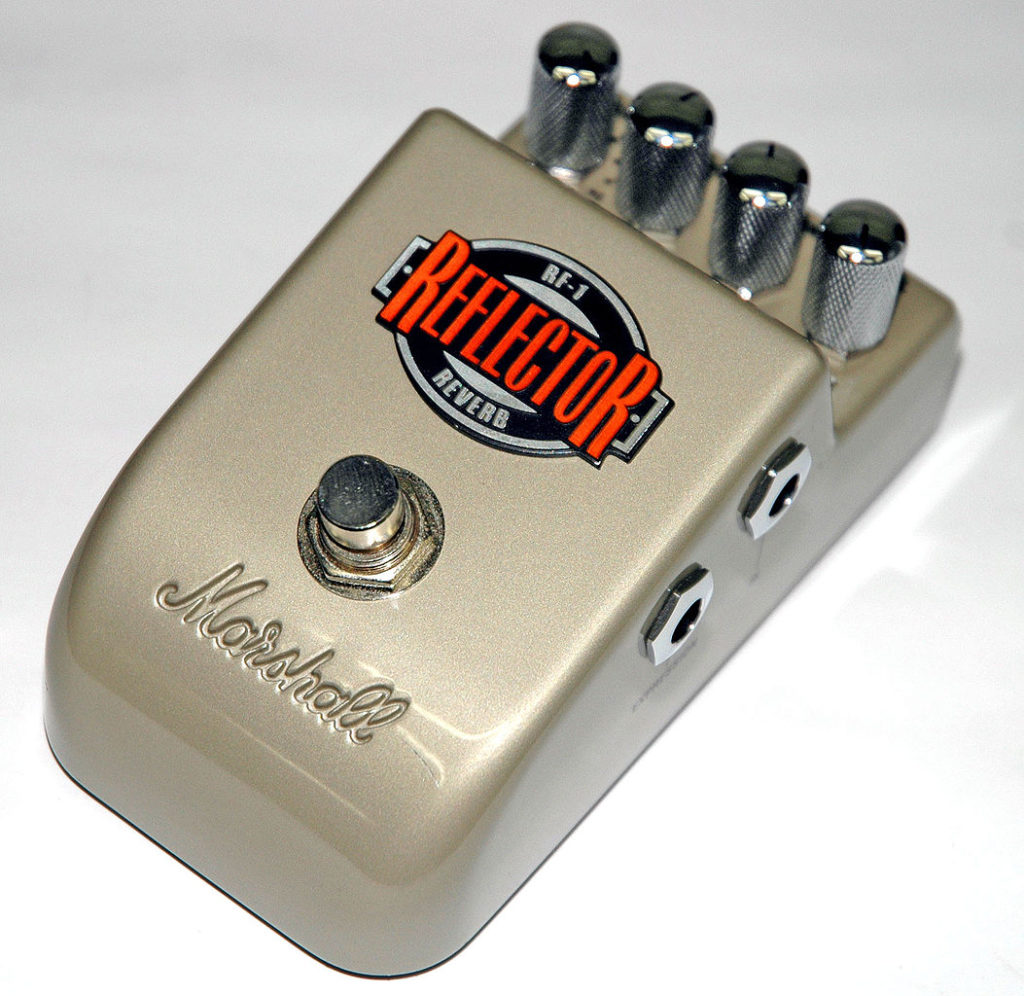
And that’s exactly what reverb effects are trying to emulate: the way a single instrument sounds different in different spaces and reflecting off of different materials. Many common environments that reverb units try to emulate are halls, churches, and chambers. There are some pretty unique reverbs like a particle reverb that adds special effects to make things sound more spacey, and there’s even one that attempts to emulate what we imagine a black hole to sound like.
Reverb effects are another staple in the toolbox of guitarists across all genres. Just like how delay effects produce a sense of depth and space, reverb effects provide the same ability, but with a different approach. Frequently, especially in modern music, reverb effects are so subtle that it’s hard to even notice that they are there. It’s only when they are removed do we realize that suddenly the sound has become too “close” sounding.
However, some artists have used large amounts of reverb with very positive outcomes. Bon Iver is an artist that comes to mind, as well as The Edge from U2.
One thing that is worth trying is combining different delays with different reverb effects. You can get some seriously beautiful sounds with a reverb and delay effect that sound good together. Some manufacturers have even gone so far as to create reverb and delay combo pedals. It is truly a perfect combination of effects, kind of like peanut butter and jelly.
Here is a Strymon BigSky reverb pedal that provides many classic reverb sounds including plate, hall, spring, room, and many more. Besides providing reverb, this pedal also allows users to add on a delay.
6. Filters
Filter effects are effects that filter out certain frequencies of a sound. For example, you can use a filter effect to take away all the high and low end of a sound, and end up with a mid-heavy sound. Using a filter like I’ve just described often produces a sound that sounds like it’s coming from a megaphone.
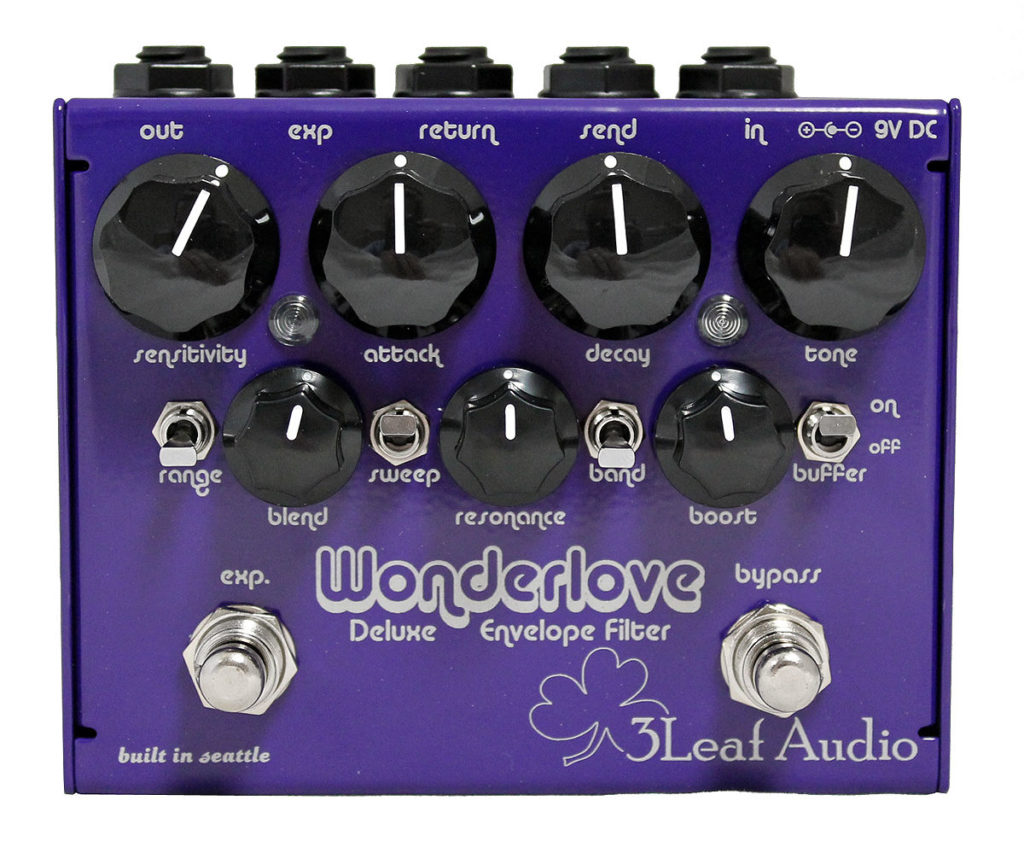
Filters can also be sweeping filters controlled by a wah-wah pedal. Wah-wah pedals are a foot controlled pedal that kind of looks like a car’s gas pedal. As you press the pedal forward, the filter moves to the lower end of the the sound spectrum, leaving the mid- and high-end sounding more pronounced. As you bring the pedal back, the high end is filtered, leaving a muffled sounding guitar tone.
There are also some filter pedals known as auto-wahs, and they work the same way a wah-wah pedal works, just that the movement of the filter is automated by the pedal. This helps if you haven’t developed the hand-foot coordination needed to play with a regular wah-wah pedal.
Wah pedals can sound eerily similar to a human voice, and they were actually a favorite of Jimi Hendrix, who many have said possessed the most expressive guitar playing amongst all the great guitarists. Wah pedals are great to activate right when you’re about to take a solo and when you really want to make it sound like you’re speaking with the guitar.
Auto-wah and wah-wah filters are often used in funk music, but they’re also popular with neo-soul, jazz, and pop artists.
In fact, at the beginning of this article I mentioned John Mayer’s song, “I Don’t Trust Myself.” The way that guitar tone is achieved is by using a filter pedal called the AdrenaLinn III. That effect is a beat-synced filter effect, meaning it has the ability to sync up the sweeping filter with the rhythm of a song. This is accomplished by either tapping in the tempo on the pedal, or setting the tempo with the tempo knob.
John Mayer uses a Wah pedal in this solo for “Good Love Is On The Way.” A very pronounced “wah-wah” sound can be heard in this fiery solo.
Others
Then, there are the “others” as I like to call them. These are effects that don’t fall into any of the previous categories, but neither do they require a category on their own. These effects pedals typically fall into the following subcategories: Modeling, Multi-Effects, and Loopers.
Modeling pedals use a host of methods to make your guitar sound like it’s coming from a specific sound source. For example, there are many pedals out there that are designed to model the sound of classic amps. This allows you to plug your amp and pedal straight into a PA system or even a pair of headphones, while maintaining the characteristics of the amp the pedal is modeled after. This also helps you avoid having to carry your amp with you everywhere you go.
Some modeling pedals are also designed to make your electric guitar sound like an acoustic guitar. This can save you space in your car as you won’t have to bring two guitars out anymore. Some modelers can even make your guitar sound like an organ or piano!
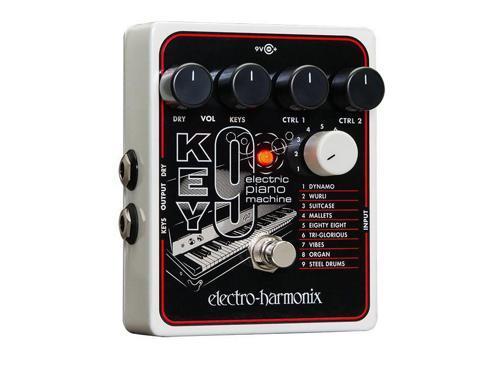
Here is Electro-Harmonix’s Key9 Electric Piano pedal. This pedal transforms the sound of your electric guitar into a wide selection of electric piano sounds. Definitely one of the most unique class of effects pedals on the market.
Multi-effects units are unique devices as they are digital floor units that use digital algorithms to simulate thousands of different effects pedals. Many of these multi-effects units also come with built in amp modelers. So technically speaking, you don’t have to worry so much about getting separate effects pedals and putting them together.
You honestly could get a single multi-effects unit that will already have thousands of the most popular stompboxes built in, plug it into your PA or headphones, turn on one of the many built-in amp modelers, and you’re good to go. This is actually a solution that many touring musicians have gravitated towards, as it is so much easier to just carry around a single multi-effects unit compared to a pedalboard with several different pedals and a separate amp.
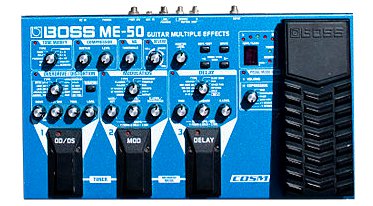
Many musicians have also found that multi-effects units are more reliable at maintaining a consistent sound night after night. Good multi effects units do come at a high cost though, and they may not sound as authentic as their analog stompbox counterparts.
Here is one of the highest-end multi-effects units on the market right now. The Line 6 Helix provides over a hundred high-quality emulations of famous effects pedals, 70 amp modelers, and 37 speaker modelers. The price may seem steep, but it may sometimes be more cost effective to go with a multi-effects unit like this.
Loopers or loop pedals are pedals that can record then playback whatever you play. You can also keep overdubbing new ideas over your original loop to create some complex rhythms or harmonies.
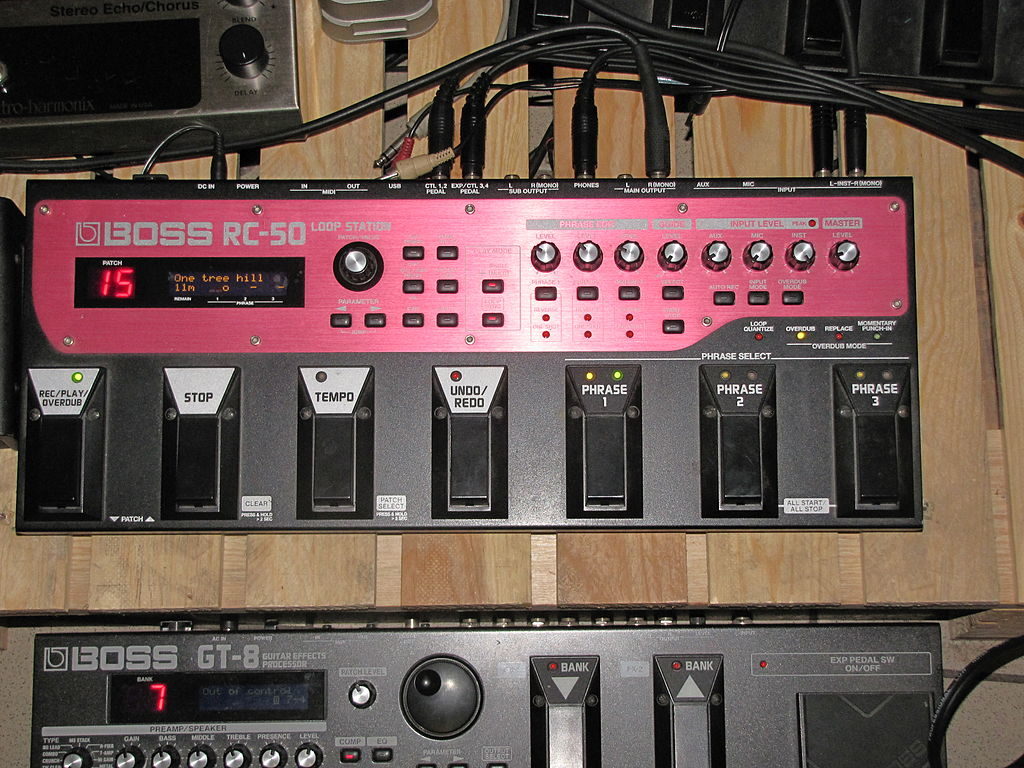
A notable artist that uses a loop pedal very well is Ed Sheeran. Check out some of his solo live performances and you will see that he uses his loop pedal very generously. With his loop pedal, he can essentially sound like a whole band even though he is alone on stage.
Here is Ed Sheeran using a loop pedal to loop multiple instruments in order to perform “Shape Of You” on his own.
So many pedals, so little time!
As I’ve mentioned before, the topic of guitar pedals can really be a rabbit-hole and some people get really, really into them. They are very often the key to the tone you keep chasing after. However, at the end of the day, a lot of your sound depends on your ability to play your instrument, so please don’t neglect practicing your instrument over trying out different effects.
At this point, some of you may be thinking that it’s overwhelming to even dip your feet into the world of guitar pedals, so what I suggest is to begin with a multi-effects unit of some sort.
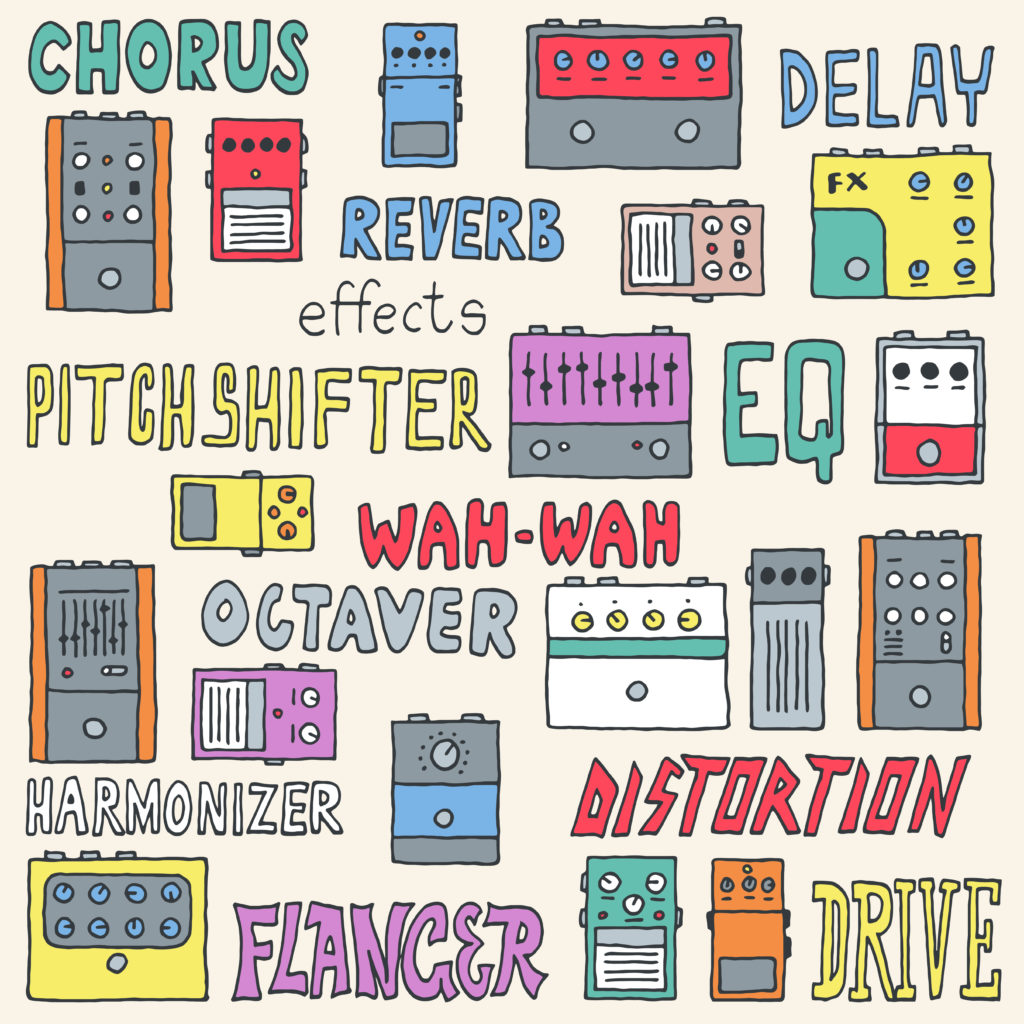
You don’t have to go for the ones that cost thousands of dollars; there are some pretty decent ones that cost less than $300. What a multi-effects unit will allow you to do is to experiment with different effects and this will give you an idea of what kind of effects you will need to get a certain sound. Once you have a good idea of what kind of effects you’d like to use, then I certainly do recommend trying out individual pedals and building a pedal board. Either that, or you can definitely upgrade your multi-effects to one that has more authentic sounding effects and modelers.
You may also be looking to get into individual guitar effects pedals right away, and maybe you’re wondering what are some of the popular overdrive, dynamic, or modulation pedals. If that’s the case, please stay tuned for our upcoming series of articles where we explore individual categories of pedals. In those articles, we will discuss price ranges, popular pedals, and the pedals that your favorite artists use.
Ready to learn music?
Start learning with our 30-day free trial! Try our music courses!
About Liberty Park Music
LPM is an online music school. We teach a variety of instruments and styles, including classical and jazz guitar, piano, drums, and music theory. We offer high-quality music lessons designed by accredited teachers from around the world. Our growing database of over 350 lessons come with many features—self-assessments, live chats, quizzes etc. Learn music with LPM, anytime, anywhere!

